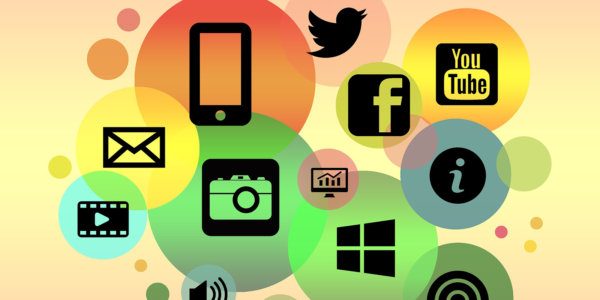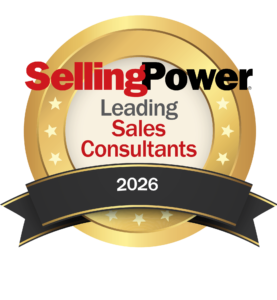How You Can Become a Social Selling Superstar, Part 1: Using Social Media for Daily Lead Generation

You are in Sales right? Why, then, do you need to know how to use social media networks?
Because today social selling is a mandatory activity every sales person needs to be successful. A 2018 stat from Blender confirmed that 55 percent of B2B buyers search for information on social media. Think of social selling as your way to utilize social media networks to build effective sales-related relationships from lead generation, to nurturing, to close.
In traditional selling, we either start with a marketing handoff of a lead and call a prospective client list, or we go out and network to find qualified leads. This article will show you the steps to follow for lead generation using social selling.
1. Decide which industries, size of companies, title and locations of companies you will be targeting.
Then, create a target sales client workbook or have your CRM ready to roll for social selling.
2. Use LinkedIn for lead research.
With sites like LinkedIn, you can research an entire organization. Start by reviewing the target company’s LinkedIn Company page. From there, you can find the company’s website, updated news, and employee profile. Search the employee profiles for the related title you are seeking to contact.
At many companies you may find multiple of related titles. For example, if you are selling to a VP of Marketing at a large company, there may be many with the same title and associated titles such as Marketing Manager, CMO, Director of Marketing, and so on.
You will also find some profiles where you can get more information than others. This depends on your subscription level (i.e. if you have the LinkedIn Sales Navigator platform, you can see more data), as well as your connection to that person (if they are a 1st connection you will see more than if they are a 2nd connection). Next, you’ll want to follow them on LinkedIn. Keep a list of who they are and how they roll up to the real decision makers, and find out who you need to influence.
What if you already have a list, or a sales meeting planned? LinkedIn should be the first place you go pre-meeting to get a sense of who you are meeting with for specific talking points.
Don’t forget about those already in your social ecosystem. Review your 1st connections and those members in your LinkedIn Groups. You can message group members directly. You can also download your LinkedIn 1st connections as a .csv file and review it for anyone that may be a qualified prospect, or anyone that has a relationship with your target profile.
If you are serious about B2B selling and need to engage with people with whom you do not have a connection, you should consider a LinkedIn Sales Navigator subscription. Many client companies I have worked with start with just one subscription to get a lead salesperson selling. This tool allows you to InMail and connect with those outside of your 1st connections, build lead lists, and get a dashboard of immediate lead updates.
3. Utilize other social networks to understand your buyers online.
Next, it is also good for you to look at your target’s Twitter, Instagram, and Facebook profiles and make active follows. Take a look at the bio pages on their websites. This is the time you need to dig into their organization and the people. Sign up for their newsletters, read their news and blogs on the company level, and read their LinkedIn posts on the individual level. See what conferences and events they are involved in and plan to attend, or at least follow the conversation in Twitter.
Review all the available information including their social connections, associations where they are involved, where they attended school, etc., and see if you have any overlaps
4. Begin to generate active and interested leads.
You have a plan. You have the lists, which include your prospect’s social profiles. You have reviewed them for who they are and their role responsibilities. You know where they are, who they are connected to, their associations and universities, and possibly their hobbies as well. You are following them and gaining notifications of their content changes, news, moves, and so on. So, what is next?
If you have a direct connection to your target and believe they would welcome a reconnect, this can mean a simple message to invite them for a coffee, lunch or to join you at an event. If they are not local, perhaps send a congratulatory note in support of something they have done recently.
If it is someone you do not know, see if you have any 1st connections in common and reach out to your common connections to invite them for a call or lunch to see how you can help them. Then, if it makes sense, ask if they can make a warm introduction to your target (I will cover nurturing in further detail in Part 2).
Make it a daily practice to read, like, share and comment on your target’s content – appropriately and with value, of course. Salespeople that add value in such a way to ease the burden of a buyer’s responsibilities win. Thinking this way in social is important. Further, finding topics of association, such as common interests, groups, events, videos, or articles keeps you visible and keeps your potential buyer interested in talking to you.
There is much more to this topic, but these tips and action steps will get you started with lead generation for social selling. Keep a lookout for my next installment in this series – How You Can Become a Social Selling Superstar, Part 2: The Social Lead Nurturing Process to Close.
Jasmine Sandler is former Director of Global Data Sales at IBM. She is a Google and LinkedIn awarded Speaker and Trainer on B2B Social Selling and the CEO of JS Media and Agent-cy Online Marketing, She is the author of Branding and Sales the LinkedIn Way, A Guidebook for Content Writing and Sales and How to Brand Yourself Online Like A CEO.
Get our Enewsletter
Get the latest sales leadership insight, strategies, and best practices delivered weekly to your inbox.
Sign up NOW →